 |
 |
 |
| |
TMC-125, new NNRTI for Resistance
|
| |
| |
Reported by Jules Levin
EACS
Dublin, Nov 18, 2005
The second exciting presentation today was initial study results for the first NNRTI for patients who are resistant to efavirenz and nevirapine. Week 24 study results were presented for two studies using TMC-125 in NNRTI resistant patients. Each study was conducted in a different patient population with one study population more treatment-experienced than the other. In the study of more highly treatment-experienced patients TMC-125 demonstrated a mean viral load reduction of -1.18 log at week 24. The viral load reduction varied depending on how many ART drugs the patient was sensitive to. Safety and antiviral activity is discussed below for both studies.
"Safety and tolerability of TMC125 in 3-class-experienced HIV-infected patients: 24-week primary analysis of trial TMC125-C203" the lesser treatment-experienced patient group
there was some discussion about the change in viral load shown in the graph immediately below. As you can see the 1 log viral load decline is similar for all three study arms. The baseline viral load is so low that its hard to distinguish between study arms. Second, this study started before the tubes incident occurred in the BMS EFV vs Reyataz study, where they had the same problem. In the second viral load graph below you can see differences between arms, and in the second study you can see differences in viral load decline between arms.
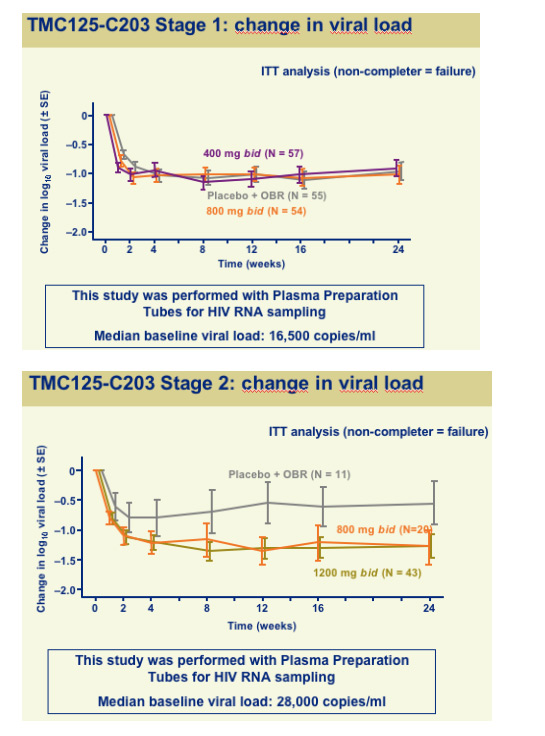
Julio Montaner presented these study results in the afternoon session today in Dublin.
TMC-125 is a novel NNRTI designed to have a high genetic barrier to the development of resistance. In a 7 day trial, TMC-125 monotherapy produced a mean change in viral load of -0.9 copies/ml in patients failing NNRTI-based therapy.
TMC125-C203 is a phase II dose-reduction, double-blind, placebo-controlled trial conducted at 52 sites in Canada & Europe, including patients who are:
--3-class experienced, each class for at least 3 months, and viral load >1000 copies/ml.
Patients received TMC-125 or placebo plus OBR (optimized background regimen) consisting of:
--3 to 4 ARVs (1-4 NRTIs ± 1 LPV/r or SQV/r or Fuzeon).
--use of at least 2 active drugs (excludingf TMC125).
STUDY DESIGN:
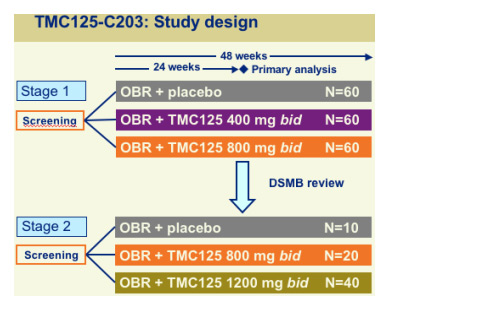
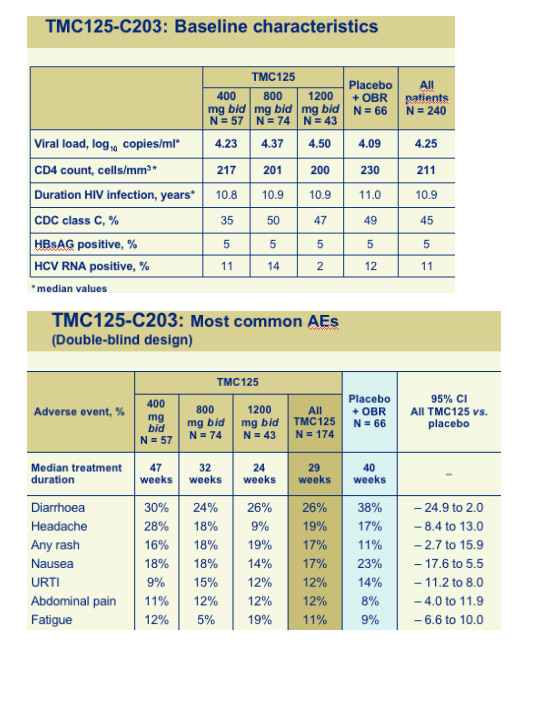
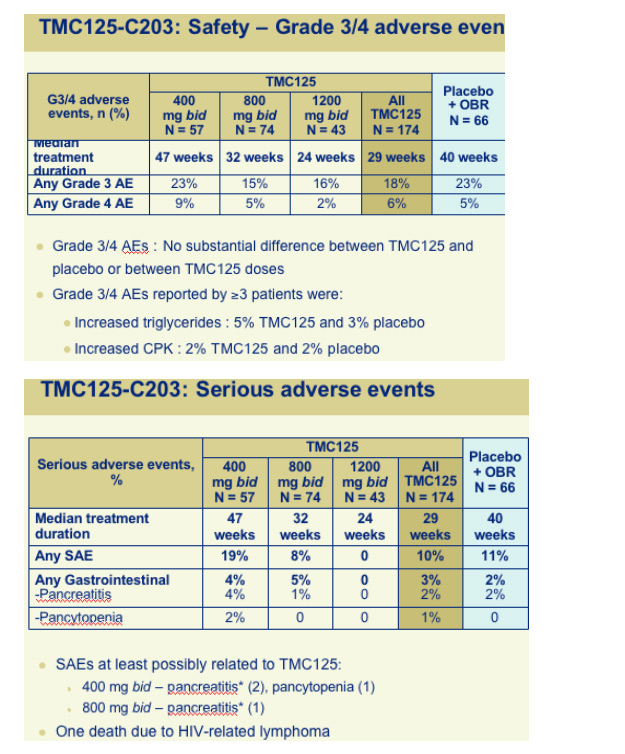
TMC125-C203: Rash
Overall incidence:
--17% TMC125 vs. 11% placebo (95% CI: –2.7 to 15.9)
--No dose relationship
Relatedness and severity:
--8% were at least possibly related to TMC125
--One Grade 3 rash plus fever (in 400 mg group)
--No SJS, TEN or erythema multiforme
Permanent discontinuation due to rash:
--2% TMC125 vs. 2% placebo
Time to onset / duration (at least possibly related rash):
--Median time to onset 13 days and median duration 4 days
No association with baseline CD4 count or gender
TMC125-C203: Neuropsychiatric disorders
--No consistent or frequent neuropsychiatric syndrome associated with TMC125
--Headache: 19% TMC125 vs. 17% placebo
--Dizziness: 10% TMC125 vs. 5% placebo
--Insomnia: 6% TMC125 vs. 5% placebo
--Psychiatric disorders: 13% TMC125 vs. 11% placebo
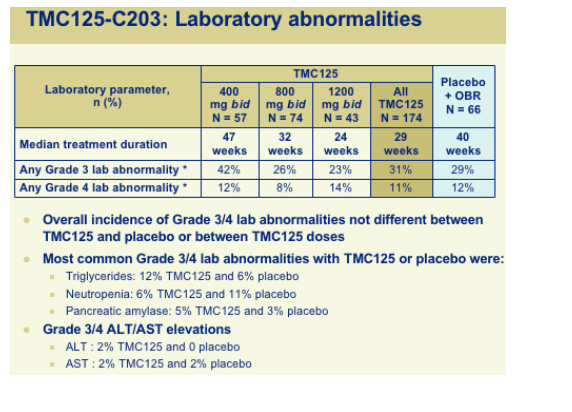
|
|
| |
| |
|
 |
 |
|
|